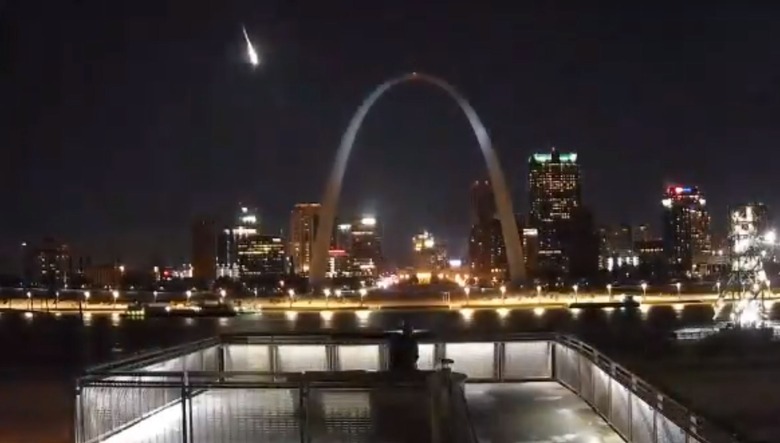This Museum Will Pay You $25,000 To Find Missouri Meteorite Pieces
Hey, so, funny story: Remember that crazy-bright fireball that appeared over the skies of St. Louis earlier this week? Yeah, it was awesome, but finding the leftovers would be even more awesome, and the Maine Mineral and Gem Museum is willing to fork over a hefty sum if anyone can locate sizable chunks of the rock itself.
The fireball that was witnessed by man across the state of Missouri was captured on video from multiple angles, and it's believed that the rock that produced it was somewhere around 220 pounds. That's a big old chunk of space junk, but did any of it survive the trip through our atmosphere?
In a press release, the museum says it will hand over a whopping $25,000 to anyone who can recover a fragment from the Missouri meteor that weighs at least one kilogram, which is roughly 2.2 pounds.
"It's an exciting opportunity to have a sample from a fireball seen one month before our official opening and we wish to enlist the public's assistance," Barbra Barrett, museum director, said in a statement. "Preliminary reports indicate a fall site approximately 50 kilometers northeast of Columbia."
It's pretty exciting, but before you grab your flashlight and shovel and spend the next week hunting for holes in the ground, it's important to know that nobody is even sure if any bits of the meteorite survived the trip.
When a space rock enters Earth's atmosphere it gets a rude awakening. The object experiences incredible friction, as the atmosphere is "thicker" than the vacuum of space. That friction produces heat, incinerating the object as it tumbles toward the surface. The fireball we see in the sky oftentimes completely destroys the object or, in some cases, breaks it into smaller pieces which are scattered over a larger area.
In the case of the Missouri meteorite, no confirmed debris has been located. Additionally, even if some tiny bits made it to the ground, there's no guarantee that any of the pieces would weigh in at over two pounds.
